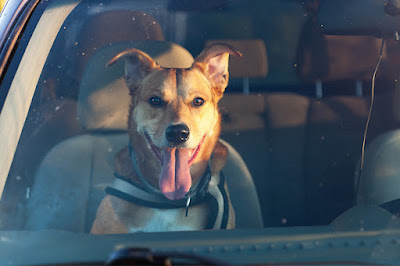
Biology is hardly unbreakable. Regardless of what type
of pet you have, at the end of the day, a pet is a biological organism and is
susceptible to sickness. Since sicknesses can hamper your pet’s daily life and
cause a host of issues for both you and them, it is necessary to protect them
against potential sickness and disease.
Here Are A Few Tips on How to Protect Your Pet Against Potential Illness:
Stay up to date on Vaccinations
Vaccinations are a reliable and efficient way of
protecting your pet from potential illnesses. Provided you get your pet booster
doses at the right times to maintain protection, vaccinations are an easy way
to safeguard their health in the long term. A rabies vaccination is commonly
cited as one of the necessary basic vaccinations for pets, but there are a few
more immunizations you can provide your pet to prevent disease and serious
illnesses. Such vaccinations are also mandatory if you ever plan on an international pet relocation. Vaccinations can help prevent the following diseases in pets:
- Distemper
- Bordetella
- Leptospirosis
- Lyme Disease
- Parvovirus
- Rabies
Depending on where you live, some vaccines will be mandatory due to government regulations, while others won’t be state mandated. If you’re confused or unsure about the protection to give your pet, visit your vet so they may clear up your doubts. Your vet can draw out a vaccination routine chart, complete with booster doses and vaccination effectiveness to help you gauge the current level of protection your pet has and how long it will be in place. As a general rule, aside from rabies, you should get your pet the basic group of vaccinations when you visit your vet with them for the first time.
1. Practice Preventive Treatment
There are plenty of ways your pet can pick up a
disease, and the more exposed your pet is to the elements, the more likely it
is to pick up an affliction. Invasive parasites can also cause illnesses, as
they pass along pathogens when they feed on a pet’s blood. Fleas and ticks are
the most commonly found parasites in household pets, and are responsible for
spreading diseases like Bartonella, Lyme Disease, and Anaplasmosis.
1. Brush Your Pet Down When Returning Indoors
If you have a pet that spends time outdoors, whether
for walks or refreshment, you should give them a basic brush when they return
indoors. Pets that spend time outdoors have a far greater chance of picking up
ticks or fleas, so brushing them immediately is a good idea and helps prevent a
potential infection. If you observe more than a tick or two, schedule a vet
visit for a thorough cleaning.
1. You may have heard this point twice or thrice already,
but that doesn’t make it any less crucial. Pets can sometimes show signs of
illness that a pet parent can’t pick up on since they aren’t an animal
specialist. Frequent vet visits are necessary for this reason, as a vet can
judge your pet’s health across different visits to establish a baseline,
against which your pet’s health is compared to check whether it is heathy or
requires treatment. Your vet will conduct physical exams, blood tests, and
waste tests to gauge your pet’s health. Any issues that they find can then be diagnosed
and treated in a timely fashion, making sure your pet remains healthy in the
long run.
Ensure Pets and Wildlife Remain Separated
If you have an outdoor pet or one that must be taken
outdoors frequently, steer clear of any wildlife in or around your area. Wild
animals like stray dogs, cats, rabbits, racoons, and monkeys carry pathogens
and parasites which can spread to your pet if they are scratched or bitten.
Make sure to keep your pet on a leash or harness when walking outdoors and
avoid wild animals. If you do run into a wild animal or have a scrap with one,
visit your vet immediately and make sure your pet’s vaccinations are up to date.
Call the local animal control authority to see if you’re having an issue with
wild animals in your locality. during pet travel by road, avoid spaces with lots of wildlife. 1. Diet
While a
healthy diet may seem like a massive change with loads to plan for, the reality
is you’ll have smooth sailing once you plan the diet itself. Remember to visit
your vet with your pet, and once you have a portion size you can measure out
for each meal, stick to it. Make sure your pet only eats healthy and drinks
clean water and steer them clear of any foreign food or water
sources like
puddles or trashcans.
1. Cleanliness is Key
Your pet isn’t the only one who needs to stay clean. Diseases can pass from animals to humans as well as humans to animals, meaning you should keep yourself clean to avoid introducing any diseases into your household. Make sure to wash your hands when returning indoors, as well as after interacting with any animal.
No pet parent wishes for an illness to befall their furry baby. The good news is that it is relatively easy to avoid any serious illnesses with a few preventive measures. Provided you keep your pet clean, avoid items of unknown origin on walks, schedule annual vet visits, and feed them a healthy diet, you should have no trouble making sure your pet stays healthy and happy.



